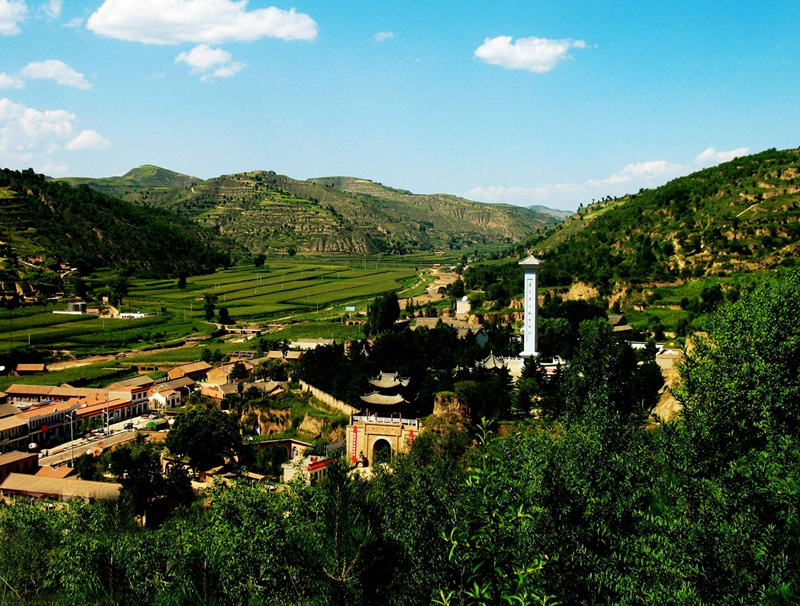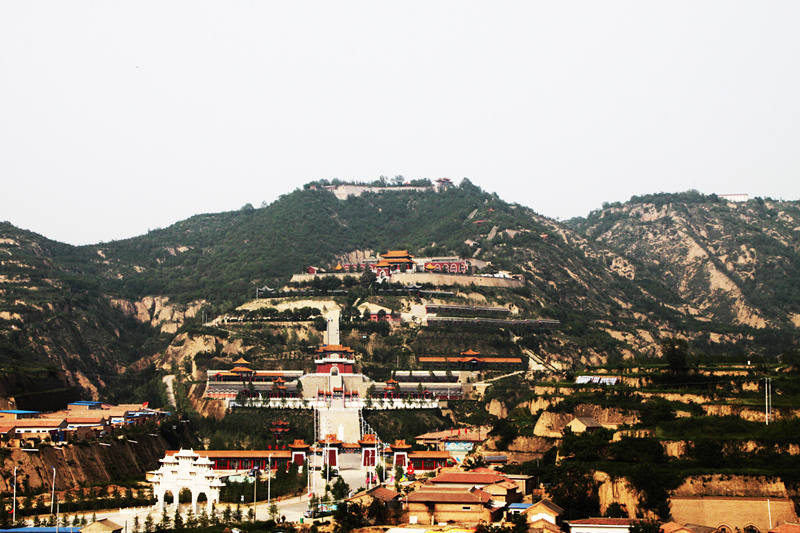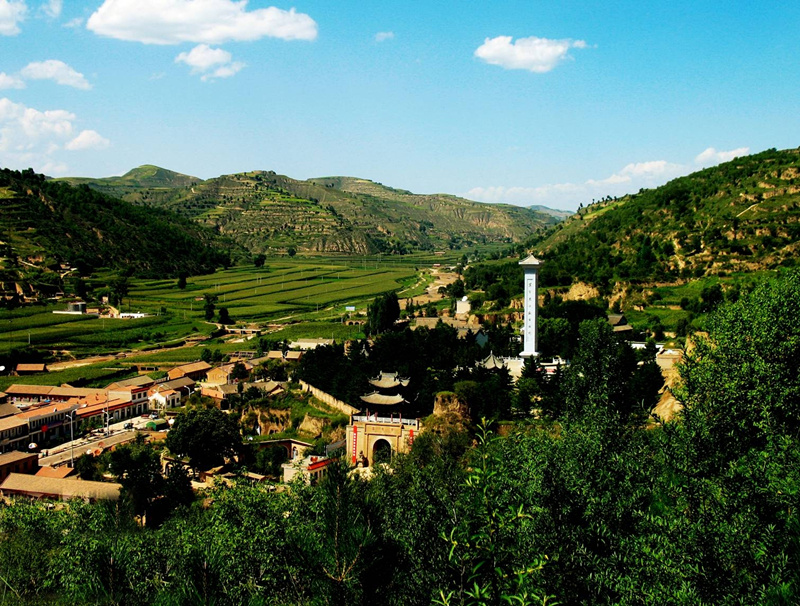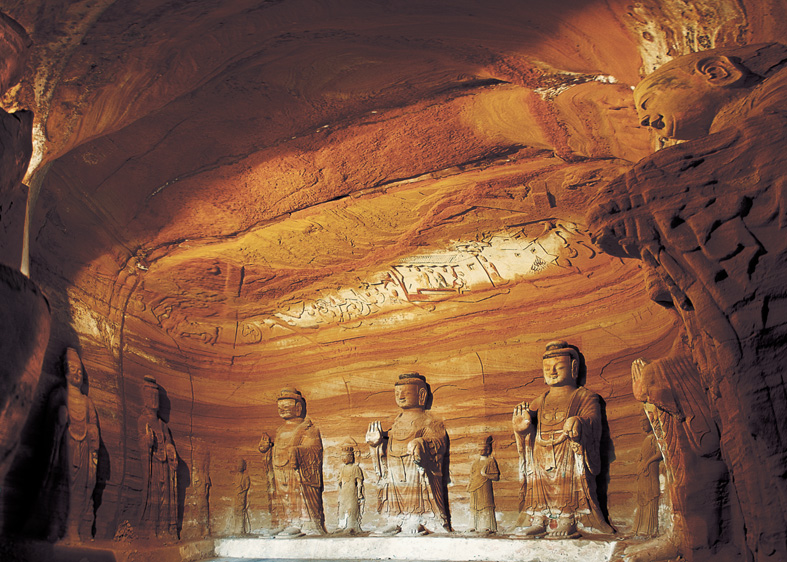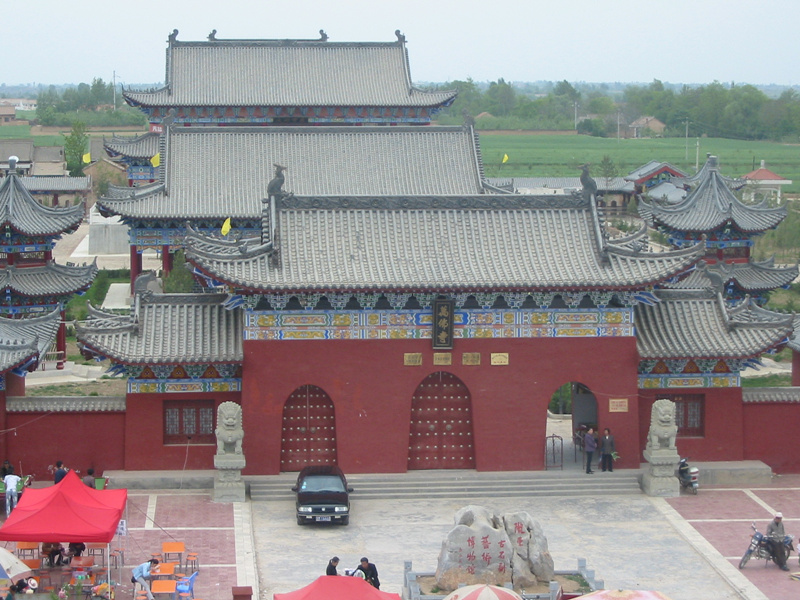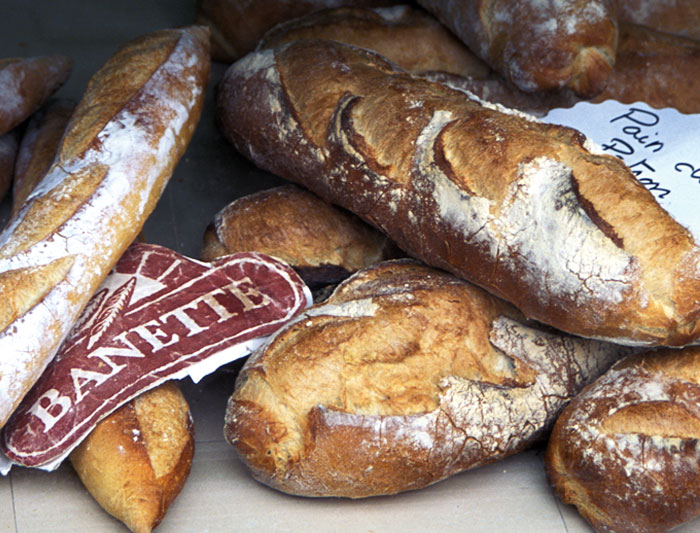Qingyang City
Qingyang is located in the easternmost part of Gansu, and it is at the intersection of three provinces -- Shaanxi, Gansu and Ningxia. In the middle and lower reaches of Yellow River, Qingyang’s topography is typically Loess Plateau ravine. It is called Longdong and enjoys the name “Longdong Barn." The total area accounts for 27,119 square kilometers. Under its jurisdiction, there are 1 district, 7 counties and 116 villages and townships. The name of Qingyang is originated from the reign of Zhenghe (1111 to 1117) of the Song dynasty. Emperor Zhao Kuangyin established the local military system Qingzhou battalion in the first year of his reign, it was renamed as Qingzhou. The name of the Huanqing Administration, which combined the initial characters “Huan"of Huanzhou with “Qing" of Qingzhou, was given during the year of Zhiping (1064 to 1067), during the reign of Emperor Zhao Shu in the Song dynasty. In the seventh year of Zhenghe (1117), the commandership of Qingyang Army was established in Qingzhou. The name of Qingyang was then officially recorded in the annals and is still in use today. The inland city of Qingyang is situated in the middle reaches of the Yellow River. It borders Ziwu Mountain (with the same meridian direction) in the east, Yangjuan Mountain in the north and Liupan Mountain in the west. The Qingyang is called a basin owing to fact that its east, west and north are higher than its south central area. The north declines to the south, the elevation ranging from 885 to 2089 meters above sea-level. There are 12 tablelands whose areas exceed 6667 hectares, the area of them added up reaching 254,667 hectares. The area of Dongzhiyuan Tableland accounts for 700 square kilometers which stretch across 3 counties and 1 district of Qingyang; it has the flat and fertile land as far as the eyes can see. Dongzhiyuan has the largest original surface of loess, the thickest soil layer and best preserved tableland, so it is called the First tableland in the World. This area belongs to the continental climate. In winter, northwest wind blows, the weather being cold and sunny. In summer, southeast wind is prevailing, the weather being hot and frequently rainy. From south to north, the rainfall declines. The rainfall lasts from July to September. The temperature of the south is higher than the north; the annual average temperature is from 9.5 degree Celsius-10.7 degree Celsius. Its climate is summarized as an arid, moderate climate with sufficient sunshine. Qingyang is the one of the cradles of early agricultural civilization of the Chinese nation where the people lived and multiplied 200,000 years ago. Early agriculture appeared there 7000 years ago. Buzhu, the ancestor of the Zhou Dynasty, initiated agriculture civilization. This is the home to Huanjiang Pterosaur and Yellow River Flumen Stegodon, also the birthplace of “the first old stone tool in the Paleolithic period" of China. As the birthplace of Chinese medical culture, its founder Qi Bo was born here and here he finished the remarkable masterpiece The Inner Canon of Huangdi. This is an important part of the “old revolutionary area" Shaanxi, Gansu and Ningxia, honored as The Eternal Red Zone. The city of Qingyang is the State-level Base of energy and chemical industries, possessing a wealth of oil, natural gas and coal. It is the birthplace of Chanqing Oilfield. The area has rich cultural and historical assets: Zhou’s Ancestral Tombs, Gongliu Worshiping Site, the Highway from the Qin Dynasty, North Grotto Temple, The Ancient Burial Complex, The Ancient Fortress, Beacon Fire Towers, as well as the site of The Shaanxi Gansu Ningxia Border Region Government, the 7th Branch of the Chinese People’s Anti-Japanese Military and Political College, and Nanliang Memorial Museum. The local agricultural culture, folklore culture, and the Aboriginal Loess Culture are acclaimed by experts as “The miniature of Cathay culture, the Crystallization of ethnic culture and the earliest graphic arts". They are also valuable resources for tourism development: embroidery, paper-cut, shadow figures shows, and Daoqing opera. Zhou’s Ancestral Tombs Forest Park of Qingcheng County (AAAA)
Located on the Dongshan mountain of the Qingcheng county of Qingyang City, Gansu province, Zhou’s Ancestral Tombs Forest Park is named after a well-known tomb on top of the mountain, the tomb of Zhou’s ancestor Buzhu. It’s not only a good place for climbing and sightseeing, but also for pondering over deceased sages. It is known as the No.2 Ancestral Shrine in China. Zhou’s Ancestral Tombs Park boasts a long history and beautiful scenery, and has long been a tourists attraction. The lay-out of Zhou’s ancestral cultural area on top of the mountain is, in general, well-proportioned. When the spring and summer come, apricot flowers begin to blossom and leaves of the willow trees are green. The fragrance of flowers greets people in the woods. In the late autumn and the early winter, red leaves do not completely fall, but it begins to snow. The wind blows and the trees shake—the whole picture makes one feel that the sky is high and the land is vast. The great Zhouzu Hall, located in the left side of Zhou’s Ancestral Tomb, is magnificent and spectacular. The corridors, Qi Feng Ting and Jian Ting, at the north and south sides of Zhou Emperor Temple, provide a space for tourists to understand the ups and downs of the Zhou Dynasty and to apprehend the essence of the poetry inscriptions. During festivals and holidays, visitors come here either for climbing the mountain to offer sacrifices or simply for sightseeing. Covered by the shadow of green cypresses and pines, the palace hall is filled with incense curling upwards, and melodious chimes lingering in the hall. Outside the hall, crowds of visitors walk through the pavilions and trees and flowers, enjoying the beautiful scenery with lots of fun. Nanliang Revolutionary Memorial Hall (AAA)
Nanliang Revolutionary Memorial Hall is located in Liyuanbu of Nanliang Township in Huachi County of Qingyang, Gansu Province. It was built to commemorate the Soviet Government of Shaanxi-Gansu border region established by Liu Zhidan, Xie Zichang, Xi Zhongxun and other proletarian revolutionaries. their guerrilla activities. The total area of the Memorial Hall is 20,000 square meters. Nanliang Revolutionary Memorial Hall has a variety of red (revolutionary) relics, among which are the Military and Civilian Production Base of Dafengchuan , the former residences of Xi Zhongxun and Liu Zhidan in Zhaiziwan, the former sites of the 7th branch school of Chinese People’s Anti-Japanese Military and Political College and Lenin Primary School. The Hall has East, West, North exhibition sections. In the West exhibition section, there are inscriptions for the martyrs, Liu Zhidan and Xie Zichang, dedicated by the proletarian revolutionary leaders of older generation: Mao Zedong, Zhou Enlai, Zhu De, etc.. The life stories of the martyrs, their weapons and saddles are also the important exhibits. The Memorial Complex has 4 sections. The first section are a gateway, having a pavilion above it, and a stone honorific arch gate across it. A pavilion housing a tablet in the center, a monument and a group of sculptures constitute the second section. The monument is 34.117 meters high and on the obverse side of it is engraved “Eternal Glory to the Revolutionary Martyrs" inscribed by Hu Yaobang. To the east of the monument is a group of white sculptures to exhibit the heroism of the soldiers and the people of Shaanxi-Gansu border region. To the west is a building named Qingyin Tower. At the back is the former site for the Soviet Government of Shaanxi-Gansu border region, which has 3 exhibition rooms to display the inscriptions by Mao Zedong, Zhou Enlai, Zhu De and the life story of Liu Zhidan and some of his belongings. And also on display there are the texts, paintings, pictures and relics of the revolutionary history in Shaanxi-Gansu border region and inscriptions by 39 state and provincial leaders and revolutionary pioneers including Fang Yi, Ma Wenrui, Wang Feng. The third group building is Qingyin Tower, built on the old site of Liyuan Theatre and a pavilion has been built. And the fourth section is the exhibition hall, displaying the introductions to the revolutionary martyrs in Nanliang and their portraits, revolutionary relics and history of Nanliang and the inscriptions by some leaders. North Grottos Temple
Located at the foot of the Fuzhong Mountain in Sigouchuan Village, Dongzhi Township, Xifeng District, Qingyang City, The North Grotto Temple was on the secondary terrace at the intersection of the eastern banks of the Puhe and Ruhe rivers. It mainly has five parts: the Sigou Grottos, Loudi Village Grottos, Shidaopo Grottos, Huabaoya Grottos, and Shiyadongtai Grottos, extending 3 kilometers from North to South. Xi Kangsheng, the Governor of Jingzhou, ordered in 509 to build it --- the period of the Northern Wei Dynasty (386-534). The North Grotto Temple now has 296 niches, and 2126 stone carving statues in total. Among them, there are 7 grottos of the Northern Wei Dynasty (368-534), 3 grottos of the West Wei Dynasty (535-556), 13 grottos of the Northern Zhou Dynasty (557-581), 63 grottos of the Sui Dynasty (581-618), 209 grottos of the Tang Dynasty (618-907), and 1 grotto of the Song Dynasty (960-1279). In addition, the North Grotto Temple has wall paintings with 69.7 square meters, 8 steles, 150 pieces of inscriptions from the Sui Dynasty to Qing Dynasty, and various building ruins. The No.165 Grotto, a Seven-Buddhist-statue Grotto at 14.6 meters high, 21.7 meters wide, and 15.7 meters deep, was built under the supervision by Xi Kangsheng. The inner space is cubical with a reversed-bucket ceiling. It includes seven Buddha statues (all 8 meters tall), the fourteen Bodhisattvas standing on the sides of the main god (all 4 meters tall) and two cross-legged Maitreya statues (5.8 meters tall), Bodhisattva of Universal Benevolence sitting on the elephant (3.5 meters high) and Asura, are on the both sides of the grotto gate. With Buddhist kasaya dressing, these statues were all engraved in elegant style with delicate features. The relief sculptures on the top ceiling of the grotto featured the Buddhist Jataka story of “Sacrifice his own body for the sake of Hungry Tiger", and the Sakyamuni’s life story of “Recreation in Royal Palace". Outside of the grotto, visitors could see one muscular guardian Buddha respectively standing on each of the two sides of the entrance. The tower base in the grotto was repaired in the Song Dynasty. Sixteen Arhats carved in the Song Dynasty stand by the both sides of windows. Various steles and inscriptions, on the both interior and exterior walls of the grotto, were made in the Song, Yuan, and Ming Dynasties. There are 23 large-scale stone statues, and over 110 statues of Thousand Buddha, Feitian (Flying Apsaras), Minstrel, and other relief sculptures of the Buddhist Jataka story and the Sakyamuni’s life story. Therefore, the No.165 Grotto is the most valuable one with largest scale and richest statues among all the grottoes in North Grotto Temple. The No.240 Grotto is the representative of the Northern Zhou Dynasty in the North Grotto Temple. The statues of three Buddha and the posture of Bodhisattva not only inherited carving achievements of elegant and delicate features in the Northern Wei Dynasty, but also displayed as the pioneering originality in a well-rounded style typically found in the succeeding Sui and Tang Dynasties. All in all, the No.240 Grotto of the North Grotto Temple is the mirror reflecting the transition of Buddhism arts from the Northern Wei Dynasty to the Tang Dynasty. Longdong Ancient Stone Carving Art Museum of Heshui County (AAA)
Located in the north of Heshui County, Longdong Ancient Stone Carving Art Museum enshrines abundant cultural relics, mainly stone statues from the Northern Wei and Tang Dynasties. Pottery, porcelain, bronze ware, jade ware, fossils and other cultural antiques in the museum provide tourists and experts with precious evidence to study religions, folk-customs, music, and painting in ancient times, and the cultural exchange between China and the West. The Museum has the hip-and-gable roofs, the typical architecture style of the Ming and Qing Dynasties, with the imposing hill gate, single-roof hall, hip-roof hall and double-roof hall. Entering the museum, visitors could successively view the Exhibition Hall, the Stele Arbor, the Stele Passage, the Yellow River Ancient Elephant Exhibition Hall, the Historical Relics Exhibition Hall, the Bell Tower, the Drum Tower, and the Taerwan Village Song Pagoda. More importantly, the ancient elephant fossil in the Exhibition Hall is the most complete and largest fossil of Yellow River Stegodon. Once entering the Exhibition Hall, visitors can fully feel the atmosphere of the Prehistoric Times and have a more immersive experience by watching film clips. |
Qingyang City
December 21, 2016
VIEWED: 0
Recommended Products
see all-
Paris to Marrakech
HKD 6415 + Book -
Spain, Portugal & Morocco
HKD 3645 + Book
